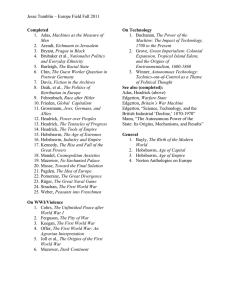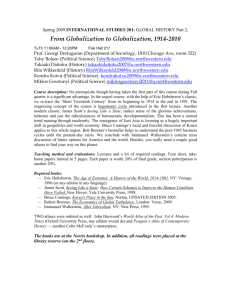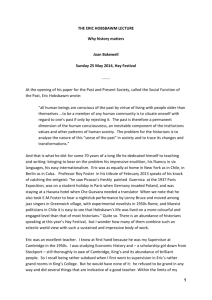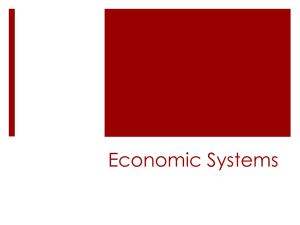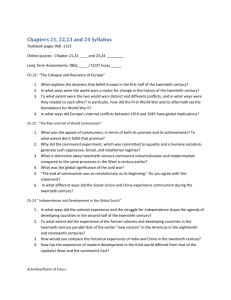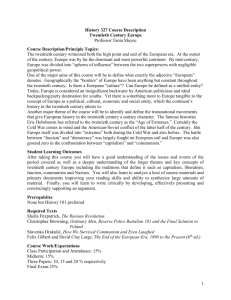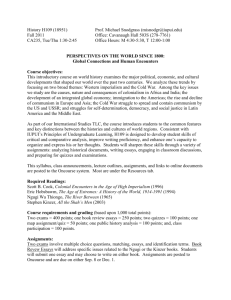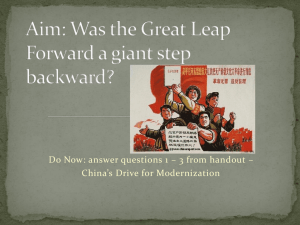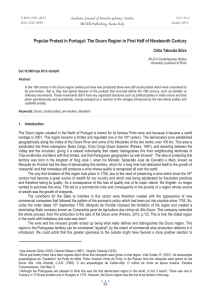Hobsbawm, The Age of Extremes
advertisement
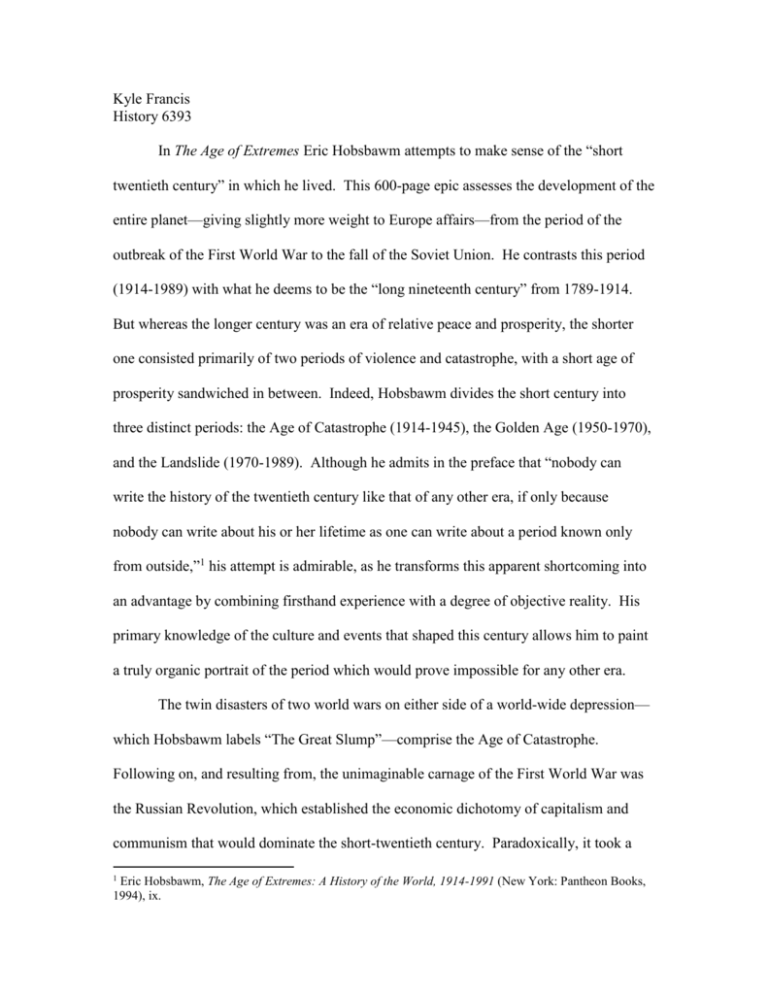
Kyle Francis History 6393 In The Age of Extremes Eric Hobsbawm attempts to make sense of the “short twentieth century” in which he lived. This 600-page epic assesses the development of the entire planet—giving slightly more weight to Europe affairs—from the period of the outbreak of the First World War to the fall of the Soviet Union. He contrasts this period (1914-1989) with what he deems to be the “long nineteenth century” from 1789-1914. But whereas the longer century was an era of relative peace and prosperity, the shorter one consisted primarily of two periods of violence and catastrophe, with a short age of prosperity sandwiched in between. Indeed, Hobsbawm divides the short century into three distinct periods: the Age of Catastrophe (1914-1945), the Golden Age (1950-1970), and the Landslide (1970-1989). Although he admits in the preface that “nobody can write the history of the twentieth century like that of any other era, if only because nobody can write about his or her lifetime as one can write about a period known only from outside,”1 his attempt is admirable, as he transforms this apparent shortcoming into an advantage by combining firsthand experience with a degree of objective reality. His primary knowledge of the culture and events that shaped this century allows him to paint a truly organic portrait of the period which would prove impossible for any other era. The twin disasters of two world wars on either side of a world-wide depression— which Hobsbawm labels “The Great Slump”—comprise the Age of Catastrophe. Following on, and resulting from, the unimaginable carnage of the First World War was the Russian Revolution, which established the economic dichotomy of capitalism and communism that would dominate the short-twentieth century. Paradoxically, it took a 1 Eric Hobsbawm, The Age of Extremes: A History of the World, 1914-1991 (New York: Pantheon Books, 1994), ix. temporary détente between the two superpowers—the USA and the USSR—which championed these opposing systems to propel the world out of the Age of Catastrophe. By fighting as (nominal) allies during World War II, they combined to defeat the fascist regimes of Europe and Asia; this victory heralded a short period of relative economic and political stability throughout the world. Before the war erupted, however, the communist system had proved its viability by managing to avoid the Great Slump which descended on all the major capitalist economies of the world. This remarkable feat engendered a host of communist revolutions and—after World War II—Soviet expansion that resulted in over one-third of the world’s population living under communist rule. Hobsbawm argues that the Great Slump, combined with the rise of communism—in another interesting paradox—ultimately saved capitalism by forcing it to reform its vulgar laissez faire policies. In America, Roosevelt (grudgingly) instituted Keynesian economic reforms: he created the modern welfare programs such as social security and government subsidies, while also heralding an age of high tariffs and overall intervention by the federal government. The end of the Age of Catastrophe was accompanied by a massive decolonization movement, which also resulted from the economic slump of the great depression and wide-spread redrawing of the geographical map that followed the Second World War. Despite the escalating Cold War, Hobsbawm sees the years 1950-1970 as the Golden Age of the twentieth century. The two most important aspects of this age of relative prosperity were the death of the peasantry and the resulting rise of urbanization. This phenomenon occurred in both capitalist and communist countries alike, and contributed to both rising living standards and the growing importance of the individual 2 over any other collective association (notably church and kinship ties). In the West, the rise of the individual comprised part of a larger cultural revolution, which also created a growing importance on higher education. As a result, a new youth culture began to assert itself through new types of media such as radio and television. In the industrial sector, developing technology produced more jobs than it eradicated and contributed to yearly incomes that rose steadily throughout this twenty year period. The USA could focus on its economy because of the world-wide stabilization that followed on the heals of World War II. Interestingly, Hobsbawm argues that the proliferation of nuclear weapons in both the USA and the USSR in actuality ensured that neither country would attack the other and that both could concentrate on their burgeoning economies. By 1970, however, this age of prosperity gave way to what Hobsbawm labeled the Landslide. In capitalist countries, the creation of new jobs could no longer keep pace with those that were eradicated by the technological explosion. In addition, as companies became more multinational their loyalty to their country was superseded by their desire to maximize profits—many first-world workers found their jobs outsourced to third-world countries. As a result, inequality began to reassert itself in first- and third-world countries. In the communist economies, the USSR was slowly losing its grip on its dominions. In addition to its well-known break with China, its iron rule created widespread apathy among its Russian and Eastern European subjects. Hobsbawm places the blame for the ultimate fall of the USSR on its own internal contradictions, rather than Regan’s neoconservative (and largely rhetorical) policies. Not only did the Soviets champion an inefficient economic system, but their widespread human-rights atrocities— notably under Stalin—severed the government’s ties to its people. When Gorbachev 3 introduced his policies of perestroika and glasnost it was already too late—dissidents seized on the opportunity to overthrow the communist political structure entirely. The decline of the capitalist and communist economies had wide-ranging consequences for the Third World countries as well. Hobsbawm also discusses the wave of revolutions—most importantly the 1979 Iranian revolution—that swept through these countries in the 1970s and 80s. Interspersed throughout his monumentous work are thoughtful discussions on fascism, totalitarianism, modernism and post-modernism. Hobsbawm also devotes time to the billion-dollar industries of music, drugs, sports and the arts. An underlying theme of his work is his rejection of post-modernism, which he implicitly confirms by attempting to make sense out of the events that have dominated his life and by placing them within an overall world framework. Despite his insightful discussions of culture and the arts, he is first and foremost an economic historian. He undoubtedly feels that the Russian Revolution of 1917 was the most important event of the short twentieth century because of its influence on every aspect of world development. Its eventual failure in 1989—far from heralding a new age of prosperity and “the end of history”—ushered in another era of instability and nationalist movements. “This old century,” he concludes, “has not ended well.”2 2 Hobsbawm, 17. 4
